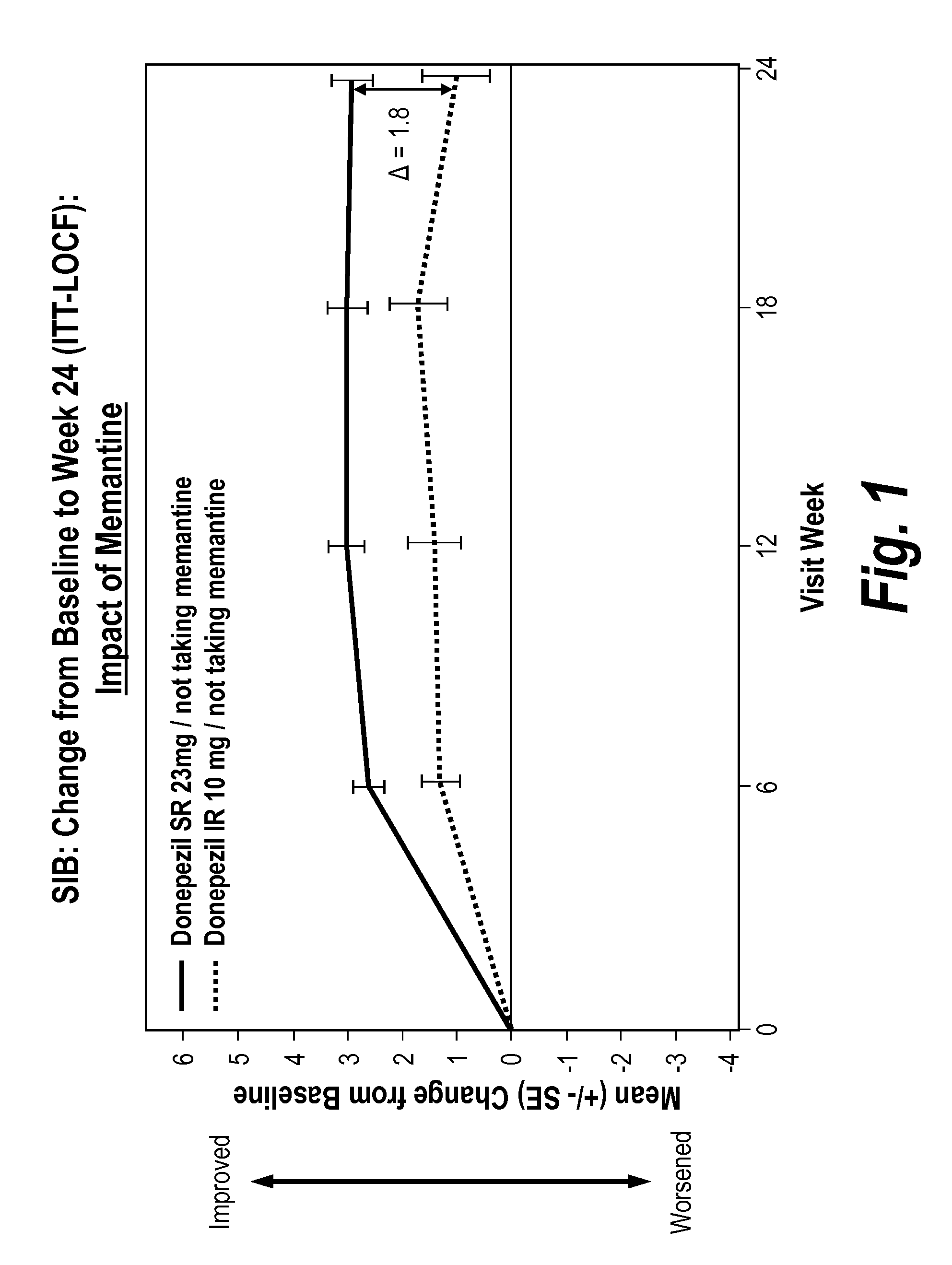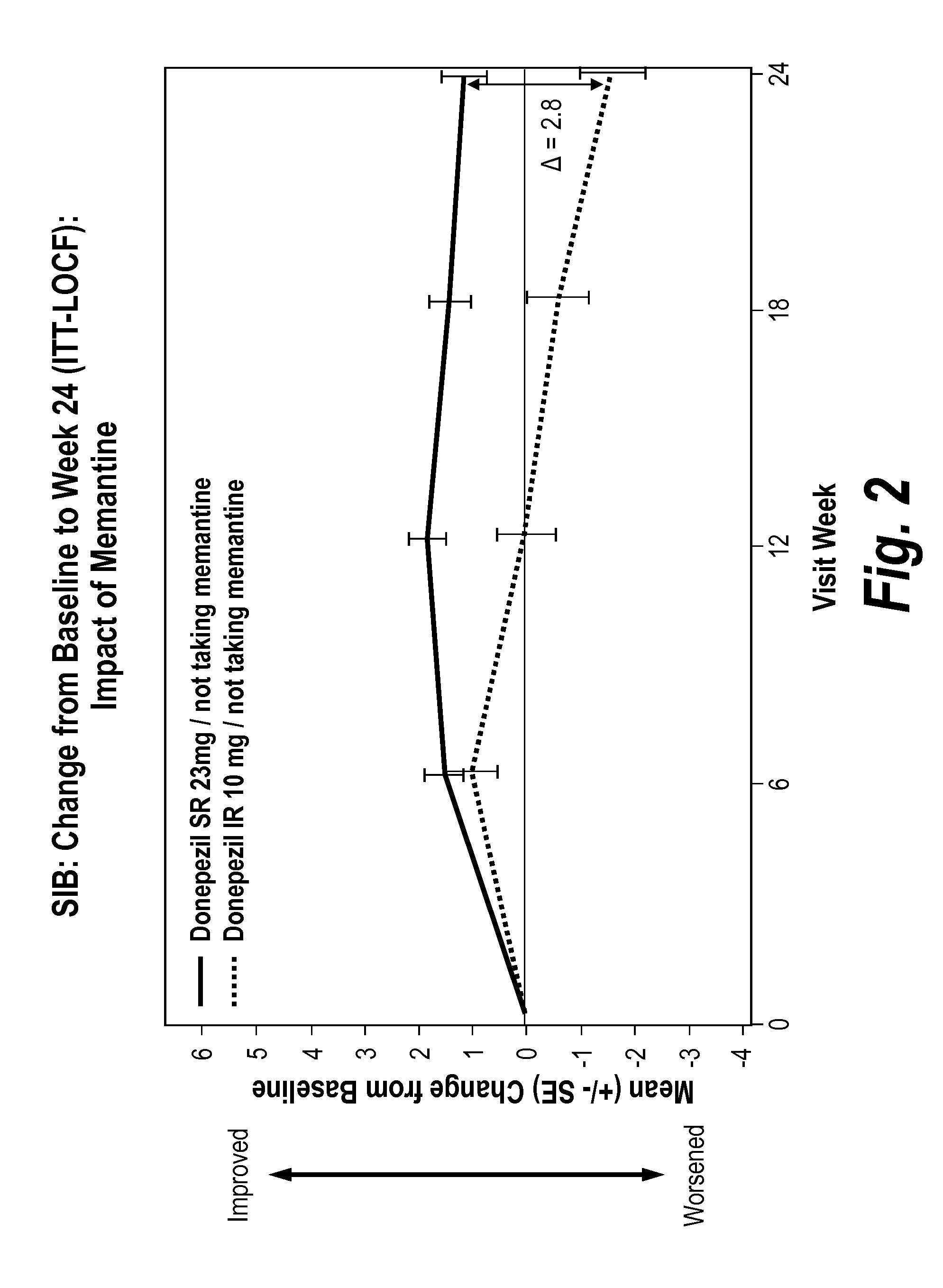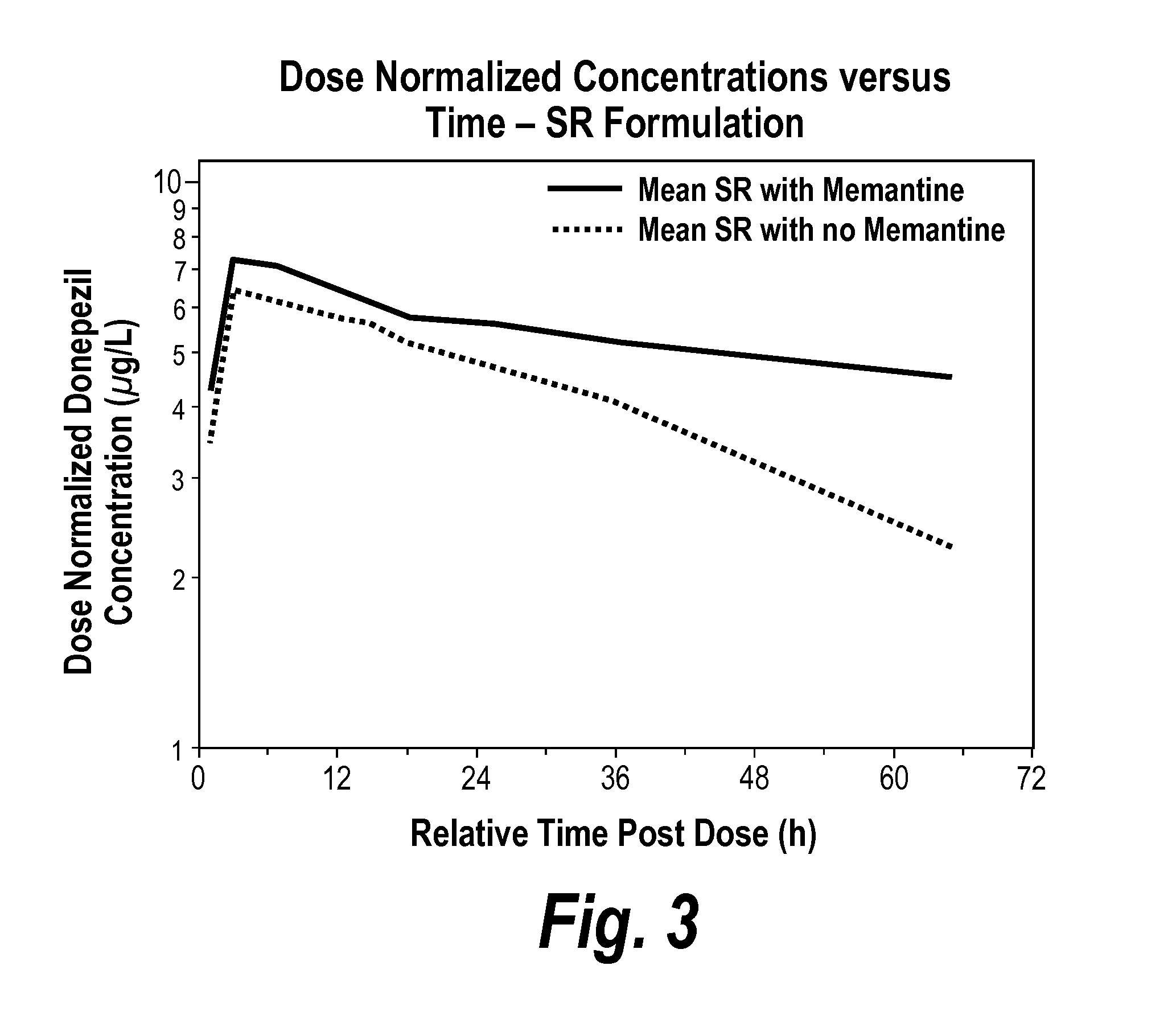Combination therapy for the treatment of dementia
a dementia and combination therapy technology, applied in the field of dementia combined therapy, can solve the problems of affecting the treatment effect of patients, so as to improve the severity of impairment battery, increase the exposure of donepezil, and improve the effect of memory
- Summary
- Abstract
- Description
- Claims
- Application Information
AI Technical Summary
Benefits of technology
Problems solved by technology
Method used
Image
Examples
example 1
[0111]Donepezil SR 23 mg tablets are matrix-type tablets containing ethylcellulose and methacrylic acid copolymer, type C, which ensures a slow release of the active ingredient from the core matrix. Three types of donepezil SR tablets were initially formulated, designed to release the active ingredient as follows: over a 4-hour period (donepezil SR 4-hour); over an 8-hour period (donepezil SR 8-hour); and over a 12-hour period (donepezil SR 12-hour). Each of the three SR formulations contained varying amounts of the core matrix material ensuring different release profiles. In vitro, the rate of release of the active ingredient into the dissolution medium at pH 6.8 differed, while concentrations of the active ingredient achieved at the end of each release period were similar.
[0112]A bioavailability study (hereafter referred to as Study 020) in healthy subjects was conducted to compare the three dissolution types of donepezil SR as 10 mg tablets. Results of the study showed that donep...
example 2
[0115]Approved therapies for moderate-to-severe Alzheimer's disease (AD) provide symptomatic benefit, without known clinical effects on disease progression. It is possible additional cholinesterase inhibition may mitigate the gradual loss of treatment benefit that occurs over time. To determine whether a higher (23 mg) once daily dose of donepezil could maintain or improve cognitive and global function, patients with moderate-to-severe AD (MMSE 0-20) treated ≧3 months with donepezil 10 mg were enrolled in a 24-week, global, double-blind, double-dummy, parallel-group clinical trial comparing once daily donepezil 23 mg extended-release tablets (23 mg) with continued treatment with once daily donepezil 10 mg immediate-release tablets (10 mg). The 23 mg extended-release formulation delays time to maximum plasma concentration and blunts Cmax compared with 10 mg.
[0116]1467 patients were randomized 2:1, 23 mg:10 mg. Concomitant memantine was allowed. Co-primary endpoints were the Severe Im...
example 3
Background
[0119]In vitro drug metabolism studies indicate that donepezil is metabolized primarily via CYP 3A4 and, to a lesser extent, via the polymorphic cytochrome P450 isozyme, CYP2D6.
[0120]Memantine is used to treat several neurological disorders, including Alzheimer's disease. In vitro studies conducted with marker substrates of CYP450 enzymes (CYP1A2, -2A6, -2C9, -2D6, -2E1, -3A4) showed minimal inhibition of these enzymes by memantine. In addition, in vitro studies indicate that at concentrations exceeding those associated with efficacy, memantine does not induce the cytochrome P450 isozymes CYP1A2, CYP2C9, CYP2E1 and CYP3A4 / 5. Therefore, interactions with drugs metabolized by these CYP enzymes, including donepezil, were not expected. Furthermore, memantine is predominantly eliminated via the renal route. Hence, drugs that are substrates and / or inhibitors of the CYP450 isozymes (such as donepezil) were not expected to alter the metabolism and disposition of memantine.
[0121]Ob...
PUM
| Property | Measurement | Unit |
|---|---|---|
| Mass | aaaaa | aaaaa |
| Mass | aaaaa | aaaaa |
| Mass | aaaaa | aaaaa |
Abstract
Description
Claims
Application Information
 Login to View More
Login to View More - R&D
- Intellectual Property
- Life Sciences
- Materials
- Tech Scout
- Unparalleled Data Quality
- Higher Quality Content
- 60% Fewer Hallucinations
Browse by: Latest US Patents, China's latest patents, Technical Efficacy Thesaurus, Application Domain, Technology Topic, Popular Technical Reports.
© 2025 PatSnap. All rights reserved.Legal|Privacy policy|Modern Slavery Act Transparency Statement|Sitemap|About US| Contact US: help@patsnap.com



